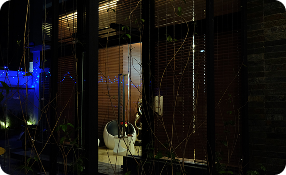How Much To Charge For Catalog Design?

What Is Catalog Design?
Catalogs are a great way for companies to promote their products or services. A catalog is similar to a brochure, but it goes much deeper into the product.
For companies wishing to give their customers more information, this is a great alternative. It gives a brief description of the different items on offer, which are often found in supermarkets as well as on the internet.
Businesses depend so much on catalogs, which customers have the option to flip through and read at their own pace. With almost all items in a catalog provided with adequate descriptions, the customers do not have any difficulty making use of the catalog either at the shop or on the net.
In the same way, catalogs are absolutely crucial for online vendors; they furnish details on the products and services that accompany the purchases.
The effectiveness of this means of advertising still depends greatly on the design of the catalog. Anyone who approves a beautiful, practical catalog will easily find all the information. The catalog is a marketing tool that can be said to be reasonable as it has an attractive layout, quality images, and relevant descriptions of the products.
How Much To Charge For Catalog Design?
There may be several bases that determine the charges of a catalog design. Catalog design costs typically range from $50-$200.
Catalogs that include more extensive images tend to be even more expensive. A smaller beefcake catalog that is more targeted will be more cost-effective for buyers and less time-consuming for the designer so you may charge less for them.
However, if you do outsource, you can set an hourly rate or an amount regardless of the length of the project. These rates derive from geography, skill level, and project complexity, among other factors employed.
The Basics Of Catalog Design
A catalog that is properly designed is one of the channels that can be effective for reaching your target market. It is the ability to massage potential clients’ wants by showcasing important features and addressing a particular audience. Therefore, here are some basics that you need to know:
Address Lifestyle
The lifestyle of your customers is the basic requirement for a winning catalog. Customers’ aspirations and intentions can be closely attached to certain lifestyles.
Focus your items in such a manner that your lifestyle will be further enhanced, and you will get closer to your audience. Always identify the objectives of the picture before designing it. This lifestyle should be reflected everywhere in your collection, including the cover pages and the images.
Referring to people who like the outdoors, for example, requires the use of words and images that reflect feelings of freedom, adventure, and the outdoors. Where there is an opportunity, if you can tap from their goals or their aspirations, then you may create a catalog that talks to them.
Suit The Preferences Of Your Readers And End Users
Regardless of the industry’s business-to-business or business-to-consumer focus, the accomplishment of the catalog design is determined by establishing the intended users of the catalog.
Every audience requires a separate and unique approach. When preparing a business catalog, carefully mention the details of your products, the bulk price, and the even more compelling elements in a B2B catalog.
In business-to-consumer catalogs, however, the design elements should draw on the lifestyle and the sentiment filled into the product. B2B clients may respond better to a straightforward, uncluttered approach than B2C clients, who are more attracted to innovative and graphic styles.
Emphasize The Products
The objective of a catalog is to sell, and thus, a sensible catalog should perforate the things showcased to the greatest advantage. Products must be the emphasis of the composition with all the other components encircling them.
Use images that illustrate the products in use to help the buyers imagine them in their own spaces. A product description vein also praises selling that particular item, for instance, how it helps the buyer or makes their life better.
Customize Your Format And Size
Among the factors that influence product perception are catalog size and format. Even when there are more products in a larger catalog, the arrangement should be orderly.
Establish how many products you would wish to present and how much space each product takes up. By adopting fewer items per page and more white space, certain specialist firms, often engaged in selling high-end goods, can verify the art and the quality of the goods.
Consider this — who are you trying to convince when you choose to publish a print or a digital version of the catalog? Careful arrangement of the wares makes the customers linger longer at the point of sale to appreciate the displayed goods.
Use High-Resolution Images
Pictures are a must if you aim to make an impression and sell the catalog. Photographic images of a high-quality resolution are required to enhance the look of the products. Pictures make people curious enough to approach them, direct their attention to the main selling points, and increase sales in the end.
Use larger pictures to show the details of the craftsmanship and the beauty of the expensive items. All the pictures should have professional lighting and angles. Pictures are crucial in respect of how appealing the catalog looks; therefore, make sure that all images are attractive and well-lit.

Mobile App Design
We Create Unique Digital Experiences For Global Brands By Integrating AI, Innovative Design, And advanced Technology.
- Travel App
- Ecommerce App
- Medical App and more.










Rezoyan Mahfuz
engmahfuz14@gmail.com
Leave a Reply